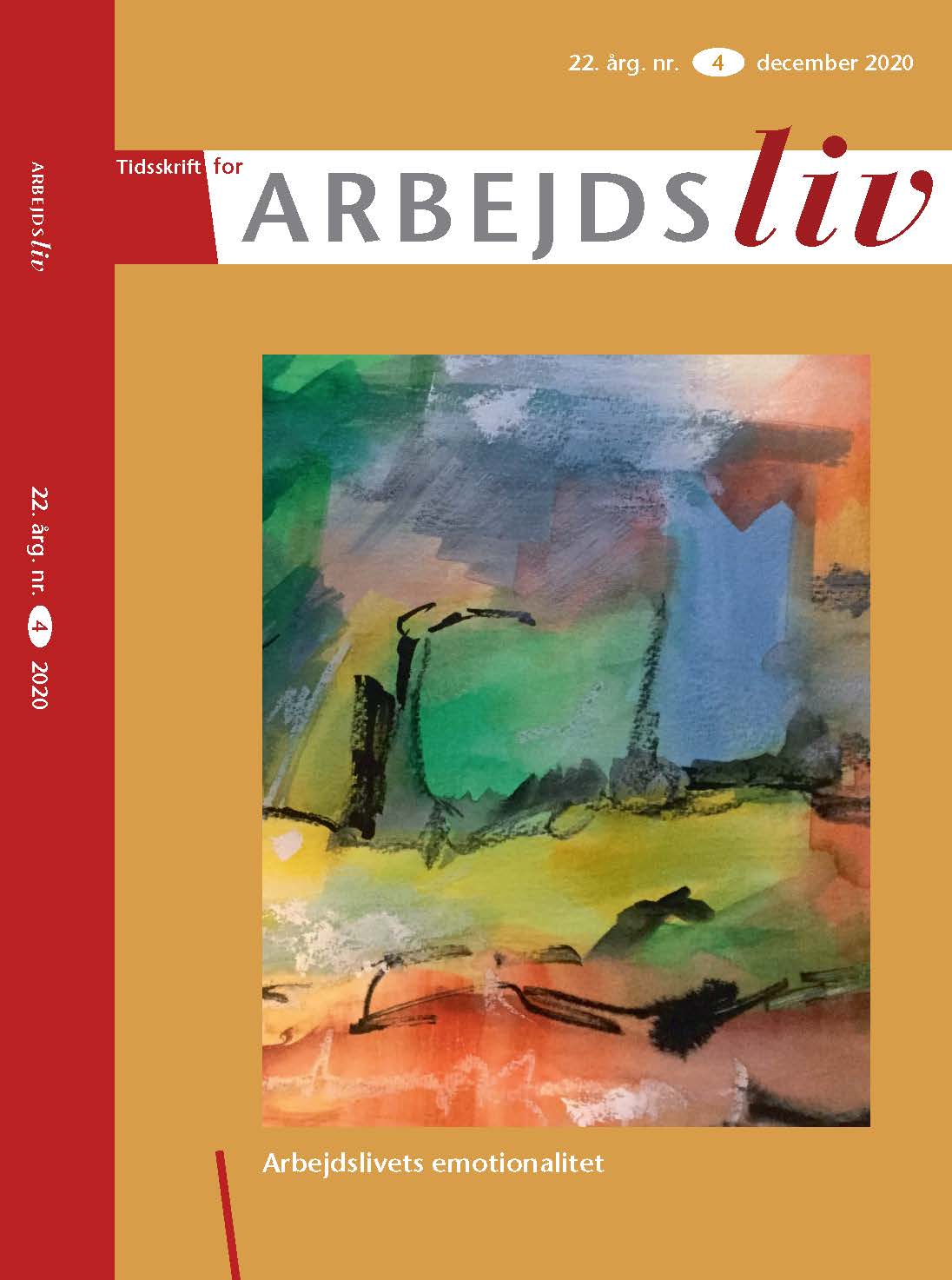Emotional work with ‘cold hands’
– a study of invisible administrative work in change
DOI:
https://doi.org/10.7146/tfa.v22i4.124211Keywords:
Emotionelt arbejde, Administrativt arbejde, Usynligt arbejde, AmbivalenserAbstract
The article focuses on emotion work in administrative work. The purpose is to examine what characterizes emotion work in administrative work and what public modernization processes mean for this part of the work. Although emotion work is and always has been an integral part of the administrative work, it remains invisible and is not recognized as an essential part of the work. The author’s ethnographic fi eld studies illuminate the character of of emotion work in case management and study-administrative work. In both cases, the work involves employees having to deal with different needs and emotions of companies and teachers, respectively, as part of thir work. In addition, ambivalence characterizes the work of opposing control logics and vague statements about roles the emotional part of the work. The caseworkers attempt to handle the challenges collectively in the professional community, whereas – for the study-administrative staff – thispart of the work is more personalized. For both cases, the emotion work is invisible and develops in connection with changes such as digitalization and new requirements to the role of the employee. The hope is that this insight will benefi t administrative staff in the future. If this part of the work and professionalism is recognized, it will be possible to support it professionally and learning-wise rather than this part of the work being personalized and handled through different individual strategies. This will both strengthen professionalism and prevent emotional strain in the psychosocial work environment.
Downloads
Published
How to Cite
Issue
Section
License
Forfattere, der publicerer deres værker via dette tidsskrift, accepterer følgende vilkår:
- Forfattere bevarer deres ophavsret og giver tidsskriftet ret til første publicering, samtidigt med at værket ét år efter publiceringen er omfattet af en Creative Commons Attribution-licens, der giver andre ret til at dele værket med en anerkendelse af værkets forfatter og første publicering i nærværende tidsskrift.
- Forfattere kan indgå flere separate kontraktlige aftaler om ikke-eksklusiv distribution af tidsskriftets publicerede version af værket (f.eks. sende det til et institutionslager eller udgive det i en bog), med en anerkendelse af værkets første publicering i nærværende tidsskrift.
- Forfattere har ret til og opfordres til at publicere deres værker online (f.eks. i institutionslagre eller på deres websted) forud for og under manuskriptprocessen, da dette kan føre til produktive udvekslinger, samt tidligere og større citater fra publicerede værker (se The Effect of Open Access).





